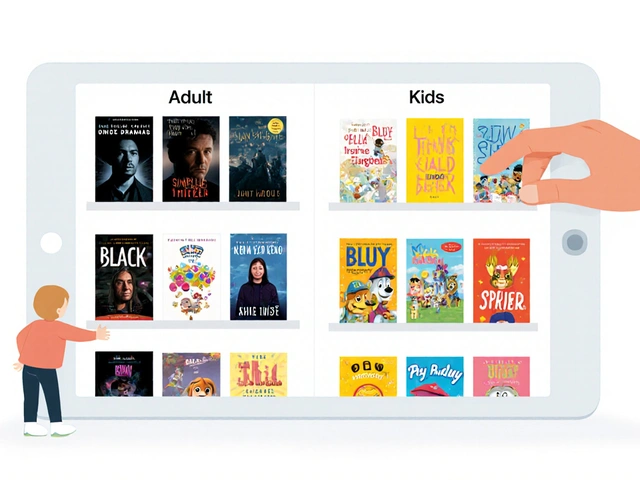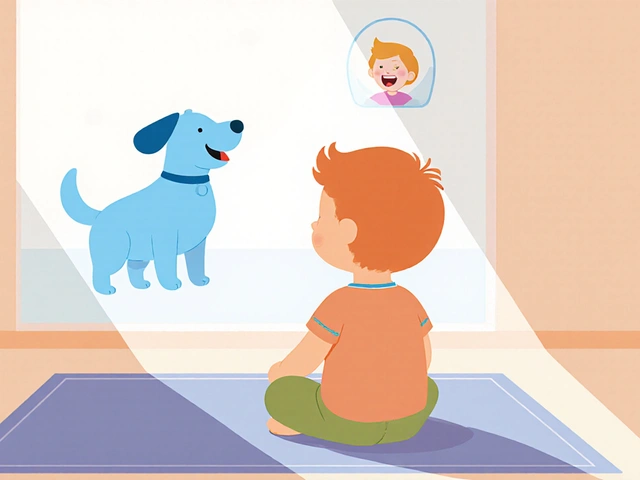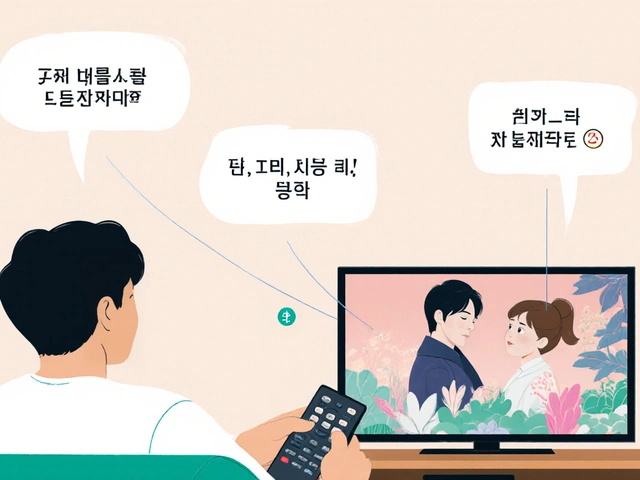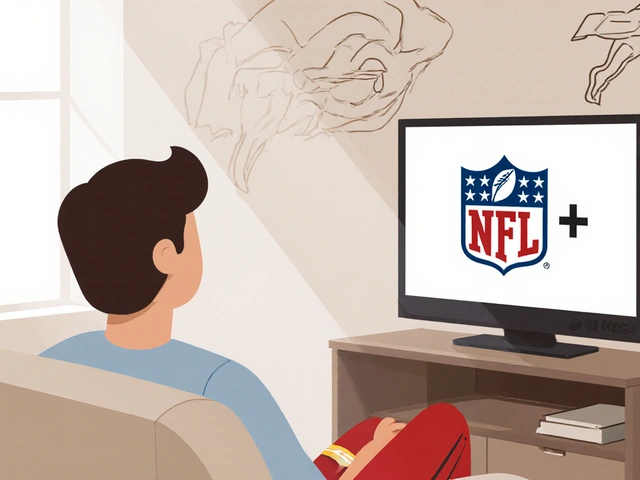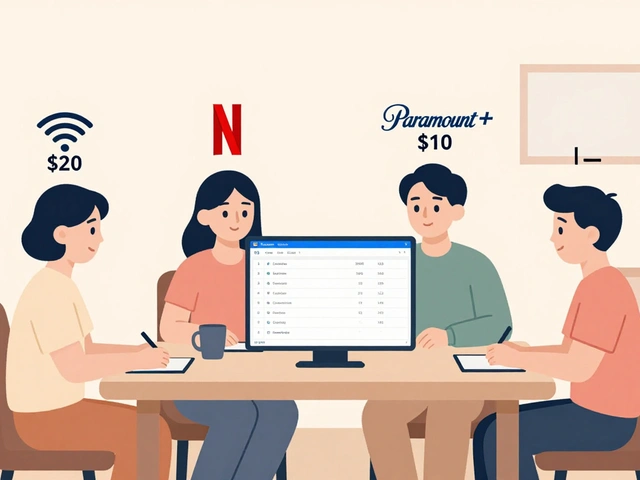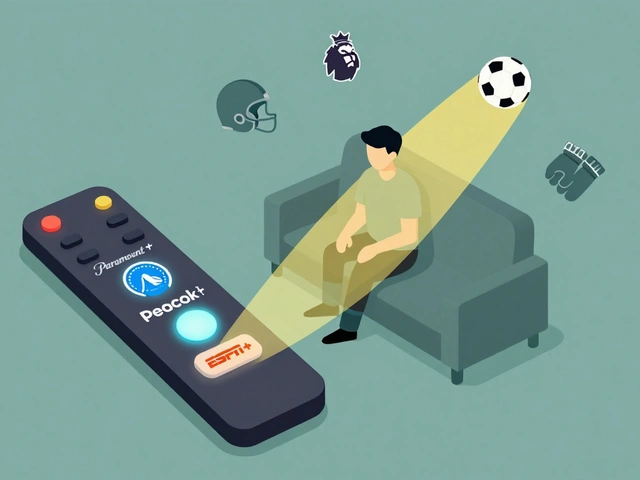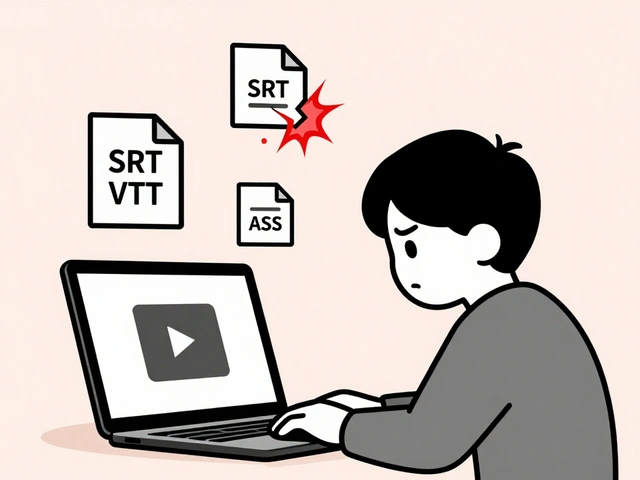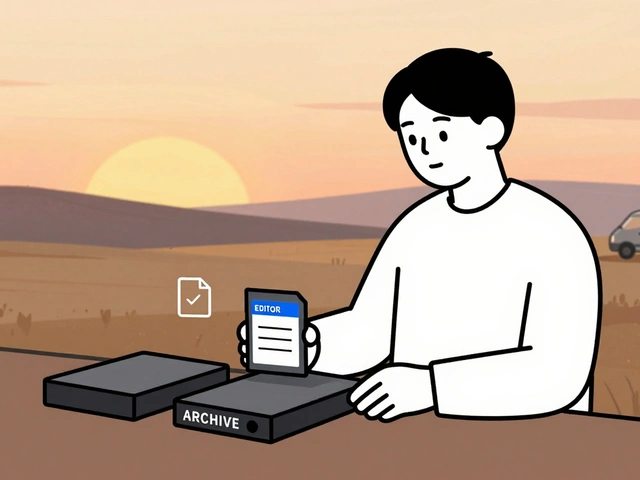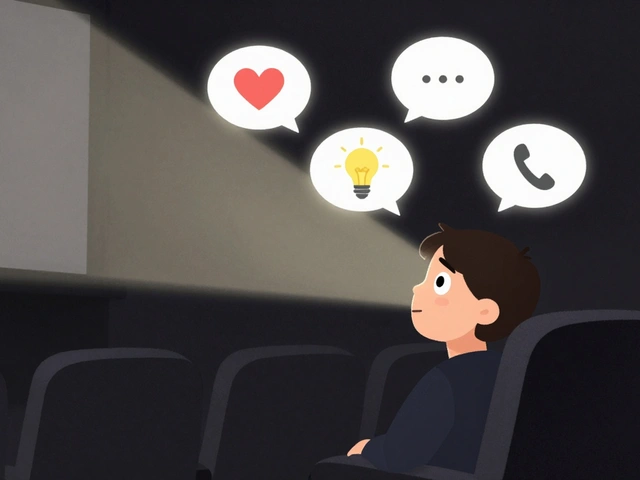18
Age-Appropriate Content: Finding Shows for Different Ages

Parents aren’t just picking shows for their kids-they’re choosing what shapes their values, language, and worldview. With hundreds of streaming platforms and thousands of titles available at a single click, figuring out what’s right for a 4-year-old versus a 14-year-old isn’t about banning screen time. It’s about matching content to developmental needs.
What Makes Content Age-Appropriate?
Age-appropriate doesn’t mean ‘boring’ or ‘safe.’ It means the themes, pacing, language, and visuals line up with how a child’s brain processes the world at that stage. A 3-year-old needs simple stories with clear cause-and-effect. A 10-year-old can handle moral gray areas. A 16-year-old is ready for complex social dynamics and emotional consequences.
The American Academy of Pediatrics doesn’t just give screen time limits-they emphasize content quality. Studies show kids under 5 learn best from live interaction, not passive viewing. That’s why shows like Bluey work so well: they model real conversations, emotional regulation, and imaginative play. Meanwhile, shows with rapid cuts, loud sound effects, or cartoon violence can overstimulate younger kids and make it harder for them to focus later.
Shows for Toddlers (Ages 1-4)
At this age, attention spans are short. Kids need repetition, slow pacing, and clear emotional cues. Look for shows with:
- Simple storylines (one problem, one solution)
- Realistic voices and natural speech patterns
- Minimal background music or sudden noises
- Positive social behaviors like sharing, saying sorry, or helping
Good examples: Bluey, Peppa Pig, Daniel Tiger’s Neighborhood, Caillou (despite some controversy, its emotional labeling helps kids name feelings). Avoid anything with pretend violence-even if it’s cartoonish. Kids this young don’t understand the difference between play and reality. A character getting hit with a pie? To them, it’s a threat.
Shows for Young Children (Ages 5-8)
This is when kids start asking ‘why?’ and testing boundaries. They’re ready for mild conflict, humor, and problem-solving. Shows should still avoid scary imagery, but can now include:
- Mild suspense (e.g., a lost toy, not a monster)
- Group dynamics and friendship challenges
- Humor based on misunderstandings, not put-downs
- Positive role models who make mistakes and fix them
Great picks: Arthur, Odd Squad, Doc McStuffins, Wild Kratts. These shows teach empathy, science basics, and teamwork without lecturing. Bluey still fits here too-its episodes often explore sibling rivalry, fear of the dark, or dealing with disappointment in ways kids actually understand.
Watch out for shows that glorify being ‘the loudest’ or ‘the toughest.’ Even if they’re popular, they reinforce unhealthy social hierarchies. Kids this age are forming their first ideas about popularity and power.

Shows for Tweens (Ages 9-12)
Tweens are starting to think critically. They notice when something feels fake. They want stories that reflect their world: school stress, friendships changing, fairness, identity.
Good shows for this age group:
- Complex characters with flaws
- Realistic consequences for actions
- Themes of fairness, inclusion, and standing up for others
- Humor that’s clever, not mean-spirited
Avatar: The Last Airbender is a standout-its characters grow, make hard choices, and face loss. Gravity Falls blends mystery and humor without crossing into horror. Phineas and Ferb works because it’s absurd but never cruel. Avoid anything that normalizes bullying as ‘just joking’ or makes adults look incompetent as a punchline.
Many tweens are drawn to ‘edgy’ content. If they’re watching shows like Stranger Things, don’t just block it-watch it with them. Ask: ‘What do you think about how that character reacted?’ Turn it into a conversation, not a restriction.
Shows for Teens (Ages 13-18)
Teens aren’t kids anymore. They’re forming their own values. They want depth, realism, and stories that reflect their inner world: anxiety, identity, relationships, injustice.
Content that works:
- Emotionally honest portrayals of mental health
- Characters making flawed decisions with real consequences
- Exploration of social issues-racism, gender, class, sexuality
- Stories that don’t wrap up neatly
Shows like Sex Education, My So-Called Life (still relevant), Never Have I Ever, and BoJack Horseman (despite its dark tone) give teens space to process complex feelings. Even if you don’t like the tone, these shows spark important discussions.
Be cautious with shows that romanticize self-destruction, glorify toxic relationships, or make mental illness seem ‘cool.’ 13 Reasons Why was criticized by mental health experts for its graphic depiction of suicide. That doesn’t mean teens shouldn’t watch it-it means you should watch it with them and talk about why it’s harmful.
How to Use Parental Controls Wisely
Parental controls aren’t a magic shield. They’re a tool to buy you time to engage. Most platforms (Netflix, Disney+, Apple TV, YouTube Kids) let you set age ratings and block content. But here’s the catch: kids figure out passwords. They switch profiles. They use tablets at friends’ houses.
Instead of relying on filters alone:
- Set up separate profiles for each child. Don’t let a 7-year-old see what’s labeled for 16+.
- Use ‘Kids Mode’ on smart TVs and tablets-it limits access to approved content.
- Check what’s trending on platforms. If a show is popular with teens, look it up on Common Sense Media or IMDb’s parental guide.
- Don’t just block. Preview. Watch the first 10 minutes. Is the humor mean? Is the violence graphic? Is the message clear?
Some parents turn off recommendations entirely. That’s smart. Algorithms push what’s engaging, not what’s appropriate. A kid who watches one mystery show might suddenly get 20 horror suggestions. Turn off autoplay. Turn off ‘recommended for you.’

What to Do When Your Child Asks for ‘That Show’
It’s going to happen. Your 11-year-old wants to watch Stranger Things. Your 15-year-old is obsessed with Wednesday. Your 8-year-old begs for Avatar: The Last Airbender because ‘everyone’s watching it.’
Don’t say no right away. Say: ‘Tell me why you want to watch it.’
Listen. Then share your concerns. ‘I’ve seen it. The characters get scared a lot. There’s a scene where someone disappears. I’m not sure you’re ready for that.’
Offer alternatives: ‘How about we watch the first episode of Avatar together? We can pause and talk about it.’
Most kids will accept boundaries if they feel heard. The goal isn’t control-it’s connection.
When Shows Cross the Line
Some content isn’t just inappropriate-it’s harmful. Watch for:
- Graphic violence or gore, even if it’s animated
- Normalization of eating disorders, self-harm, or substance abuse
- Sexualized imagery aimed at young viewers
- Shows that make cruelty funny
- Characters who never face consequences for bad behavior
If your child watches something disturbing, don’t panic. Ask: ‘What part stuck with you?’ Let them talk. Reassure them. It’s okay to feel scared or confused. That’s how learning happens.
Final Thought: It’s Not About the Show. It’s About the Conversation.
The best parental control isn’t a password or a filter. It’s sitting down, watching together, and asking questions. What did you think of that character? Why do you think they did that? Would you have handled it differently?
When kids feel safe talking about what they see, they learn to think for themselves. That’s the real goal-not just finding the right show, but raising kids who can tell the difference between what’s entertaining and what’s meaningful.

